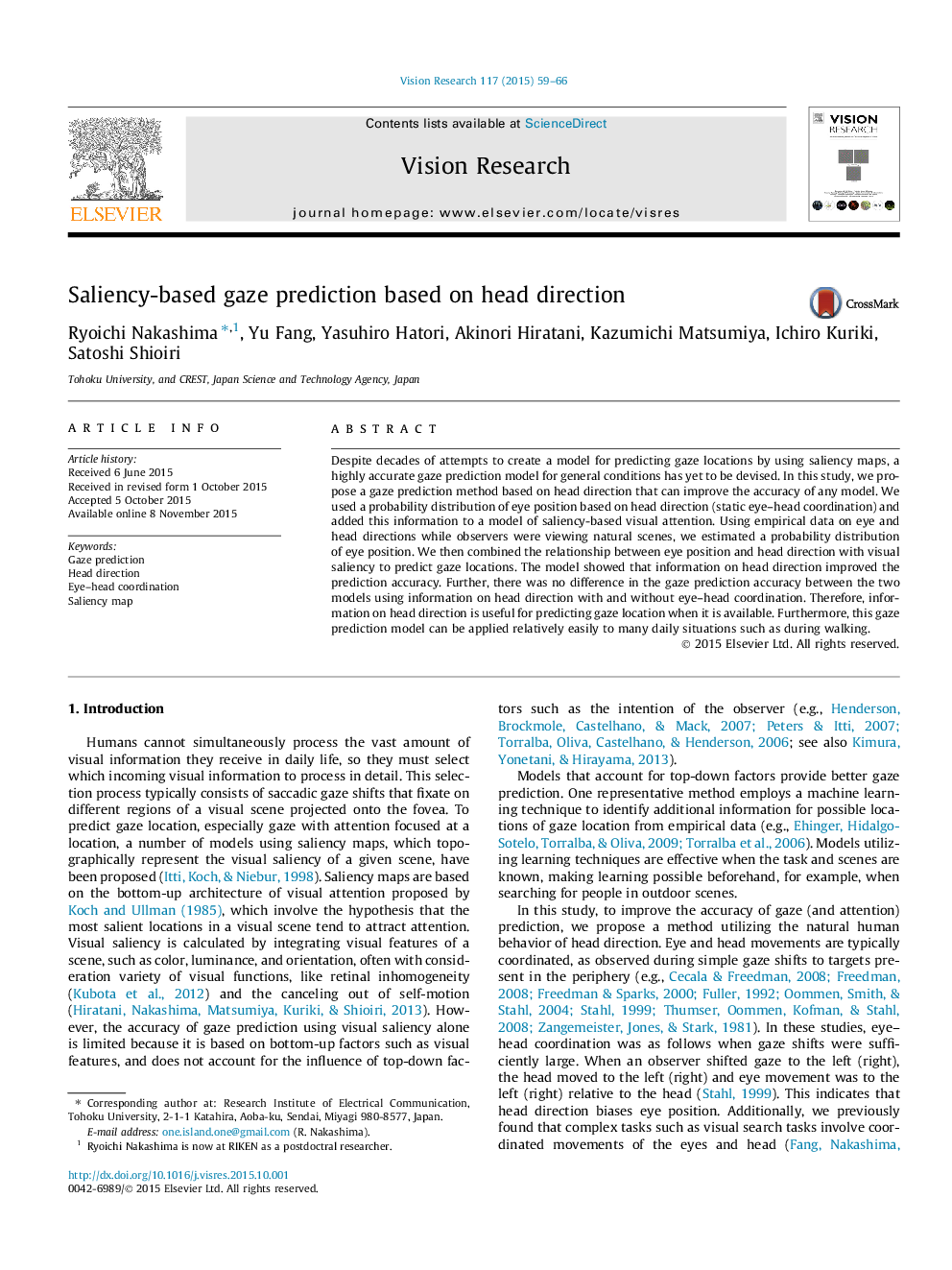| Article ID | Journal | Published Year | Pages | File Type |
|---|---|---|---|---|
| 6203072 | Vision Research | 2015 | 8 Pages |
â¢Head direction systematically influences gaze distribution, but only horizontally.â¢Using the head direction information improves gaze prediction accuracy.â¢A gaze prediction model proves useful even without knowing the eye-head coordination.â¢Because of its simplicity, the model is applicable in many daily situations.
Despite decades of attempts to create a model for predicting gaze locations by using saliency maps, a highly accurate gaze prediction model for general conditions has yet to be devised. In this study, we propose a gaze prediction method based on head direction that can improve the accuracy of any model. We used a probability distribution of eye position based on head direction (static eye-head coordination) and added this information to a model of saliency-based visual attention. Using empirical data on eye and head directions while observers were viewing natural scenes, we estimated a probability distribution of eye position. We then combined the relationship between eye position and head direction with visual saliency to predict gaze locations. The model showed that information on head direction improved the prediction accuracy. Further, there was no difference in the gaze prediction accuracy between the two models using information on head direction with and without eye-head coordination. Therefore, information on head direction is useful for predicting gaze location when it is available. Furthermore, this gaze prediction model can be applied relatively easily to many daily situations such as during walking.
